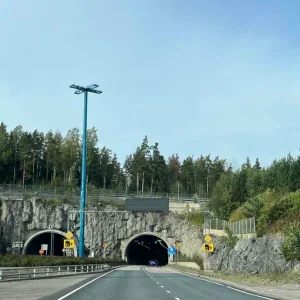This is because a city-affiliate research institute incorrectly estimated traffic volume, and this is making the SMG spend taxpayers’ money in recompensing the investor.
According to a report the city government submitted to city council member Jang Hwan-jin, the city has to pay KRW 5.5bn (USD 5M) to Woomyunsan Infraway, the constructor and operator of the Mt. Umyeon tunnel, for losses the investor suffered last year.
The amount of compensation is about double the KRW 2.8bn (USD 2.6M) paid for losses in 2011.
Woomyunsan Infraway built and opened a three-kilometer tunnel linking Seocho-dong and Umyeong-dong in January 2004, with Macquarie Korea Infrastructure Fund being the largest shareholder. The firm will operate it for 30 years before handing over the operational rights to the city.
The compensation follows a minimum revenue guarantee (MRG) agreement between the city government and the company, under which the former compensates the latter for losses if the real traffic volume is below 79 per cent of the estimated figure.
Based on the institute’s study, the two sides expected 37,840 cars would use the tunnel per day between 2004 and 2012, but the real traffic volume was 55.8 percent of the estimate.
Although the reality was far lower than expectation, the volume kept rising, from 40 percent in 2004 to 67.1 per cent in 2011, so the amount of money the city had to pay kept reducing from KRW 10.5bn (9.8M) in 2004 to KRW 2.8bn (USD 2.6M) in 2011.
However, the growing tendency reversed in 2012 after the toll was hiked by KRW 500 (USD 0.47) in December 2011. The traffic volume last year was 60.9 per cent of the estimated figure, and the city has to pay KRW 5.5.
"It is common knowledge that if a price rises, the demand decreases. But the city and the company neglected this basic logic, expecting the volume to rise to 41,174 in 2012 from 2011’s 40,299. It shows how poorly the city estimated the figure and made the contract," Jang said.
As the agreement says the toll will rise to KRW 3,000 (USD 2.8) in 2015, the city will have to pay a larger amount of money if the demand drops more.
City officials said they haven’t paid for the losses since 2010 and have been talking with the company to change the agreement.
"Since 2004, we’ve already changed the contract five times, lowering the MRG ratio to 79 percent from the original 90 percent. Change will not be easy, but we are again negotiating with the firms so that we won’t have to spend taxpayers’ money," an official said.







